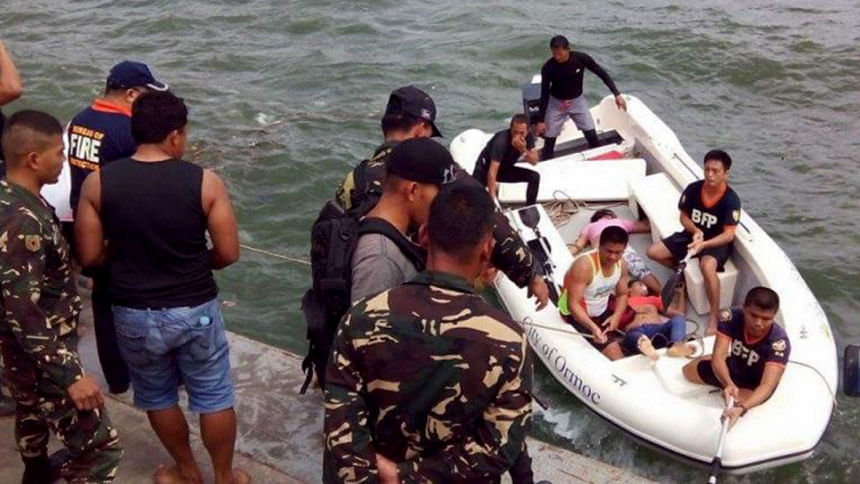38 dead as Philippine ferry capsizes

A ferry loaded with nearly 200 people capsized off a central Philippine port on Thursday, officials said, killing at least 38 people in the latest of the country's long string of maritime tragedies.
Around 27 people are still missing after the 33-tonne, wooden-hulled Kim Nirvana tipped over shortly after setting sail from Ormoc city at midday, the coast guard said.
Ormoc public safety officer Goody Edcas said that at least 125 survivors had now been found out of the 189 passengers and crew on board, adding that finding more survivors were unlikely.
"I doubt that we will find any more survivors. The only ones that the rescuers have found recently are the dead, already bloated and stiff," said Edcas, speaking as a coastguard boat docked carrying a bloated corpse clad only in a pair of jean shorts.
Survivors all recounted how the 33-tonne vessel was backing out of the port of Ormoc City on route to the Camotes island chain when the boat suddenly overturned.
"All the people were thrown into the water. I was able to slip out from under the boat by swimming, through the grace of God. But I saw children drown, some as young as two-years-old," shop owner Gina Pogosa, 32, told AFP.
She said that the crew had not distributed life jackets to the passengers before the boat set off and they had no time to don the jackets when the vessel turned over.
Vegetable trader Reynante Manza, 45, wept as he looked out to sea, waiting for word on his wife who was separated from him.
"I am alive because I jumped overboard as soon as it happened. But my wife is still there. I wasn't able to save her," Manza told reporters.
The front end of the capsized vessel was lifted out of the water by a crane on a barge in hopes that some survivors might still be trapped inside, but no one was found.
The boat bobbed above the waves a mere 200 metres (656 feet) from the shore, a reporter on the scene said.
"Some clung on to the hull of the overturned vessel, while some were rescued while swimming toward the shore," Ciriaco Tolibao, an official from the city's disaster risk reduction and management office, told AFP.
A distraught male survivor wept openly as crew members clad in blue brought him ashore, as others, looking shaken, recounted their ordeal to rescue officials.
CALM WATERS
A nearby row of soaked survivors squatted on the pier awaiting medical help, while emergency workers placed the injured onto stretchers and relatives of the missing screamed and cried nearby.
Many of the passengers were traders bringing farm produce and other merchandise to the Camotes islands whose residents rely mostly on fishing, Tolibao added.
The authorities were puzzled how the accident had happened in relatively calm waters, after initial reports of choppy seas, and discounted speculation that the ferry was overloaded.
"There wasn't any storm or any gale. We're trying to find out (why it happened)," Philippine Coast Guard spokesman Commander Armand Balilo told AFP.
He said the boat's outriggers apparently broke in the accident, and added it was possible the crew had committed a navigational error.
The captain of the boat survived the incident and will be investigated, he added.
The Kim Nirvana was on its normal route to the islands, which sit about an hour's sail from Ormoc city.
Tolibao said at least 53 of the survivors were taken to the local hospital, while more than two dozen others walked home.
Poorly maintained, loosely regulated ferries are the backbone of maritime travel in the sprawling archipelago.
This has led to frequent accidents that have claimed hundreds of lives in recent years, including the world's worst peacetime maritime disaster in 1987 when the Dona Paz ferry collided with an oil tanker, leaving more than 4,300 dead.
Ormoc and the rest of Leyte island was ravaged by Super Typhoon Haiyan which struck in November 2013, leaving more than 7,350 people dead or missing across the central Philippines.
A 1991 flash flood also killed around 6,000 people in Ormoc in one of the country's deadliest natural disasters.
The disaster-plagued Philippines is hit by about 20 typhoons and storms each year, many of them deadly.

 For all latest news, follow The Daily Star's Google News channel.
For all latest news, follow The Daily Star's Google News channel. 



Comments